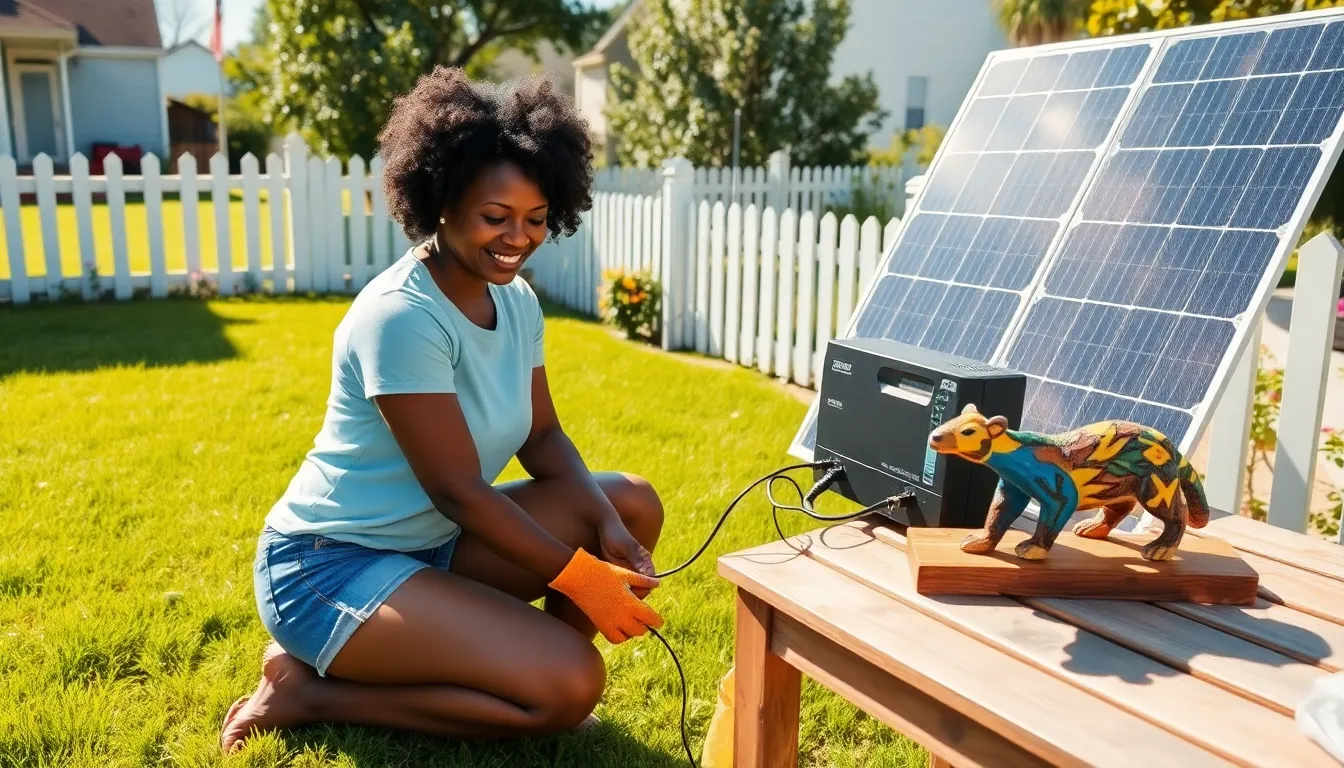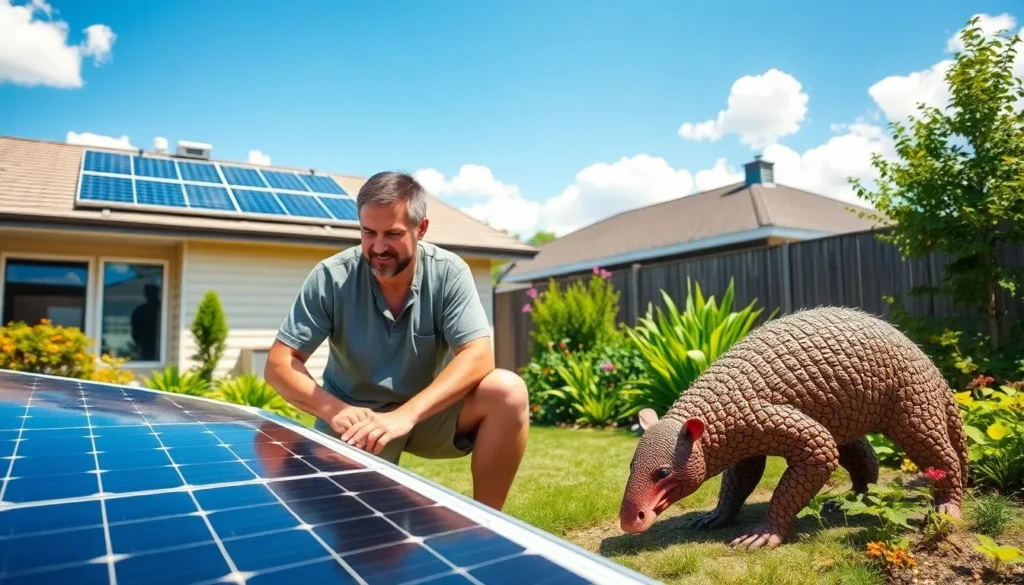Table of Contents
ToggleIn an era where environmental consciousness meets financial practicality, the DIY solar energy movement has gained significant traction. Homeowners looking to reduce their energy bills and carbon footprints can tap into the benefits of solar energy systems without very costly. Among these initiatives, HomeRocket Realty stands as a firm advocate for renewable energy solutions, specifically focusing on DIY projects that empower individuals to harness solar power efficiently. This article explores the fundamentals of DIY solar energy systems, their numerous benefits, and how the process can be streamlined for successful installations.
Understanding DIY Solar Energy Systems

DIY solar energy systems consist of solar panels, inverters, batteries, and other components that homeowners can install on their own. Unlike traditional solar installations, which often require professional assistance, these systems encourage individuals to take charge of their energy needs. In essence, a DIY solar energy system allows homeowners to generate electricity from sunlight, providing a renewable energy source that can significantly reduce or even eliminate monthly electricity bills.
The basic principle is straightforward: solar cells convert sunlight into electricity, which can be used to power household appliances. Any excess electricity generated can often be sent back to the grid, and depending on local regulations, homeowners may even receive credits for this contribution.
Benefits of DIY Solar Energy
The surge in popularity of DIY solar energy systems can be attributed to numerous benefits:
Cost Savings
Building a solar system generally costs less than purchasing one. With rising electricity rates, homeowners can experience significant long-term savings on their energy bills.
Environmental Impact
Utilizing solar energy minimizes reliance on fossil fuels, reducing greenhouse gas emissions. As a result, transitioning to solar can enhance sustainability and contribute to a healthier planet.
Energy Independence
DIY solar systems empower users to produce their own energy, so reducing dependence on utility companies and becoming more self-sufficient.
Learning Experience
Constructing a solar energy system can be an educational try, providing insights into renewable energy technologies and fostering a deeper understanding of energy efficiency practices.
Components of a DIY Solar Energy System
A comprehensive DIY solar energy system consists of several key components:
Solar Panels
These panels are responsible for converting sunlight into electricity. Options range from monocrystalline to polycrystalline cells, each with its own efficiency levels.
Inverter
The inverter converts the DC electricity generated by the solar panels into AC electricity, which is usable by most household appliances.
Battery Bank
For those who want to store energy generated during the day for use at night, a battery bank is essential. This allows homeowners to maximize their solar energy use.
Mounting Structure
A secure mount is crucial for ensuring that solar panels are positioned optimally to capture sunlight. This can be roof-mounted or ground-mounted, depending on the property.
Step-by-Step Guide to Building Your Own Solar Panel System
Building a DIY solar panel system can be broken down into manageable steps:
Step 1: Assess Energy Needs
Identify the amount of energy your home consumes monthly to determine the size and number of solar panels required.
Step 2: Research Local Regulations
Understanding local zoning laws and building codes about solar installations is crucial. Some localities may require permits.
Step 3: Gather Components
Purchase the necessary components such as solar panels, an inverter, battery banks, and mounting hardware.
Step 4: Install the Mounting Framework
Secure the mounting structure in the chosen location (preferably facing south at a 30-degree angle for optimal sunlight).
Step 5: Install Solar Panels
Attach the solar panels to the mounting structure, ensuring they are securely fastened.
Step 6: Connect the Inverter
Connect the solar panels to the inverter following the manufacturer’s instructions.
Step 7: Install Battery Storage (if applicable)
If using battery storage, connect the batteries to the system, making sure to follow safe wiring practices.
Step 8: Test the System
Once everything is installed, it’s time to test the system to ensure it’s functioning properly. Monitor the energy output for the first few days.
Legal Considerations for DIY Solar Installations
Before embarking on a DIY solar project, understanding the legal landscape is vital. Several key considerations include:
Permits
Many municipalities require permits for solar installations. Homeowners should check local government regulations to ensure compliance.
Property Taxes
Installing a solar system may increase property value, potentially affecting property taxes. It’s advisable to inquire with local tax authorities about implications.
Net Metering Policies
Understanding net metering policies in your area can help maximize benefits from your solar energy system. These regulations dictate how excess electricity sold back to the grid is compensated.
How HomeRocket Realty Promotes Solar Initiatives
HomeRocket Realty is at the forefront of promoting solar energy initiatives, championing DIY solar installations among homeowners. The company emphasizes the importance of sustainable living and empowers individuals to take control of their energy production. Through educational resources, workshops, and collaborations with solar energy experts, HomeRocket Realty aims to demystify the installation process, making renewable energy accessible to everyone. Their commitment goes beyond just promoting DIY projects, they provide tools and guidance that inspire homeowners to embrace solar solutions.
Conclusion
The shift toward DIY solar energy systems represents an incredible opportunity for homeowners. Not only does it provide substantial financial savings and energy independence, but it also contributes positively to the environment. With organizations like HomeRocket Realty paving the way for solar initiatives, the ability to harness renewable energy has never been more attainable. By understanding the components, benefits, and legalities, anyone can enter the world of solar energy confidently and transform their home into a green powerhouse.







